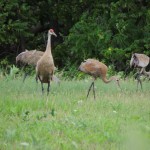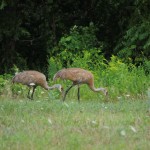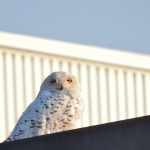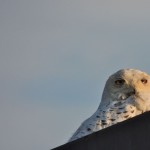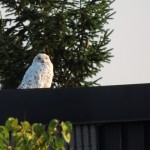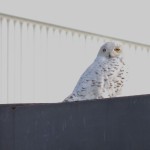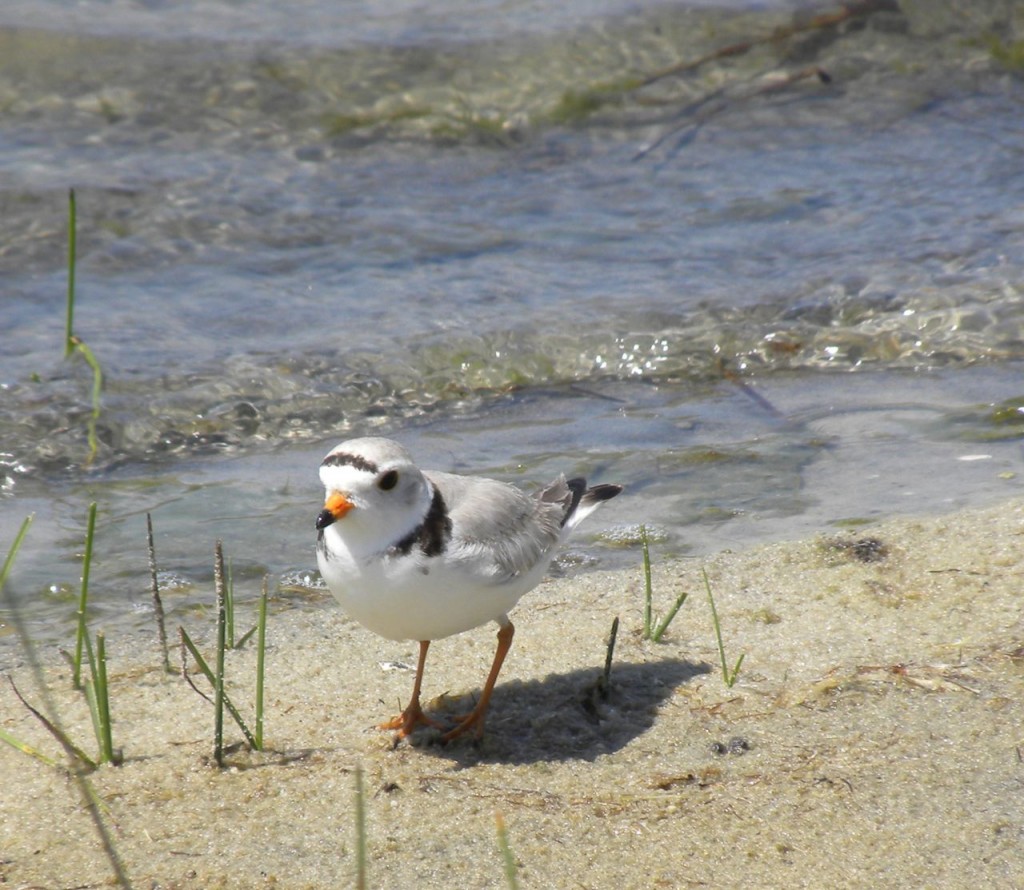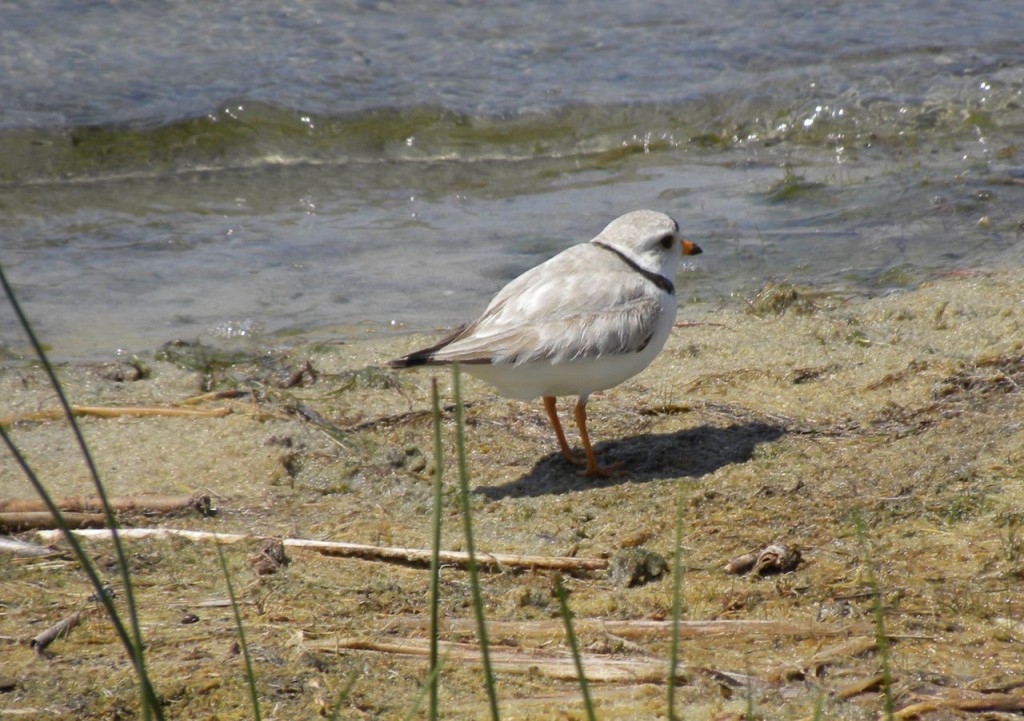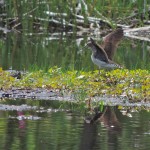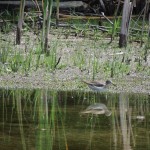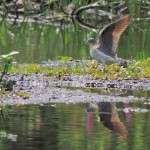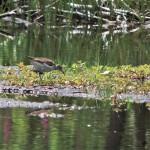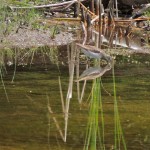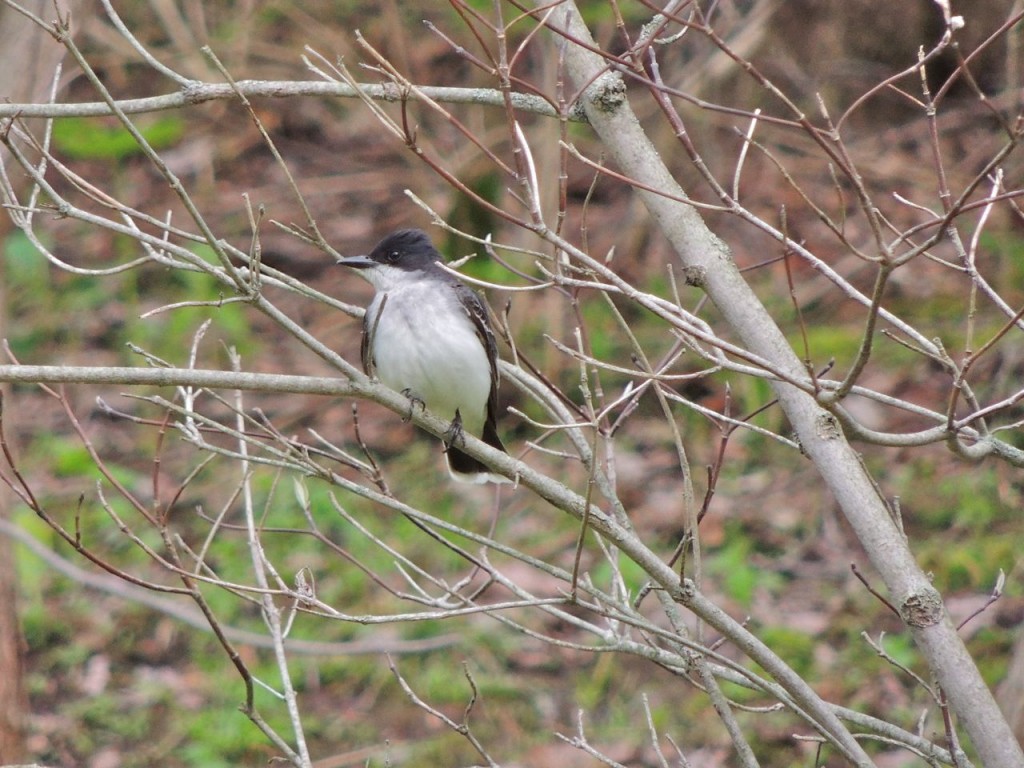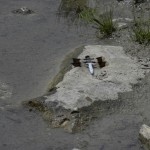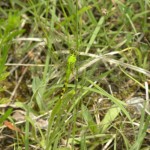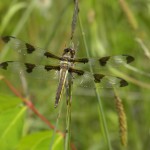13 August 2014. Cayuga, ON. Three Wow! birds today: A Yellow-billed Cuckoo, a Yellow-throated Vireo and a family of Sandhill Cranes.
I started by visiting the bird observatory where I spend much of spring and fall months. I wanted to check on the fortunes of a couple of rare plants and also follow the riverside trail to enjoy its dense summer exuberance. It turned out to be a busy walk. Within moments I was being scolded: Firstly by a pair of Tufted Titmouses, quite simply for walking through their territory; Then as I stood on the riverbank gazing at the far shore, a perched Osprey picked up the theme of indignation and started ‘tcheeping’ loudly at me; Then lastly, and most impressively, a Yellow-billed Cuckoo arrived shrieking wildly, ‘clucking‘ and ‘chakking’ from just a few feet away. Cuckoos are usually very shy and retiring birds. When we hear one, it makes us sit up and pay attention, and we count it as quite notable to catch anything more than glimpse of it. Yet this one was an extraordinary sighting; almost certainly I was somewhere far too close to a juvenile in its care. I can think of no other reason for the noisy and determined display that also included wing fluttering, tail fanning and lots of hopping from branch to branch. I managed to get a few photos, but because of its state of anxiety it hardly ever stayed still. This photograph, while hardly a prizewinner, gives you some idea of its agitated frame of mind. Surely Bird of the Day.
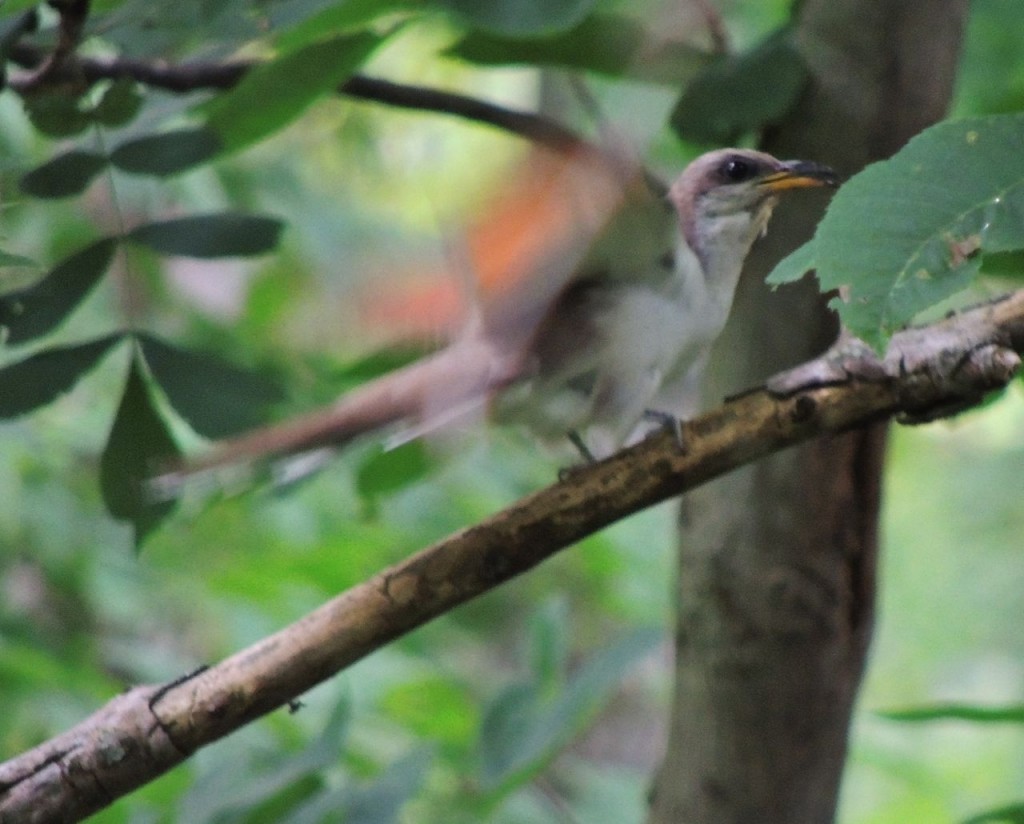
To calm things down I watched hundreds of Tree, Barn, Bank and Northern Rough-winged Swallows diving and swirling along the river’s course picking at the masses of insects hatching in the warm water. A pair of House Wrens, a Gray Catbird and a female Rose-breasted Grosbeak all added to the pleasure. Then, just as I thought the fun was over for the morning, a beautiful Yellow-throated Vireo showed itself briefly, long enough for me to gasp appreciatively; a striking, if sometimes pugnacious, Bird of the Day number two.
Much later in the day, rounding a bend in the quiet road that follows the course of the river, I spotted a family of Sandhill Cranes feeding in a gently uncultivated pasture. Sandhill Cranes are not common in this part of Ontario, yet for some time we’ve been aware of evidence of a lone breeding pair in this neighbourhood; I think this was them. I left my car a distance away and approached quietly and, I thought, hidden by thick hedges. But you’ll never fool birds into thinking you’ve left the area that easily, I knew that, but I much prefer to approach slowly and minimize the drama if possible. Eventually I found myself about 50 meters from them. The parent birds knew exactly where I was and slowly herded the youngsters away. Looking at these young birds I couldn’t help marveling at the amount and complexity of the growth they have achieved since hatching. They probably emerged from eggs some six to eight weeks ago, and in that time have grown those long, matchstick legs and broad wings that will soon be capable of carrying a body weight of around two to three kilos (4-7 Lbs). They can manage their first flight at about ten or eleven weeks, although it takes ten months for the colts to reach adult size and for most of that time they remain somewhat dependant on their parents. These are elegantly poised birds with a touch of haughtiness about them. Birds of the Day number three.
Here are a couple of shots of the Sandhill Cranes. More photos from the day (for better or for worse) can be found here.
